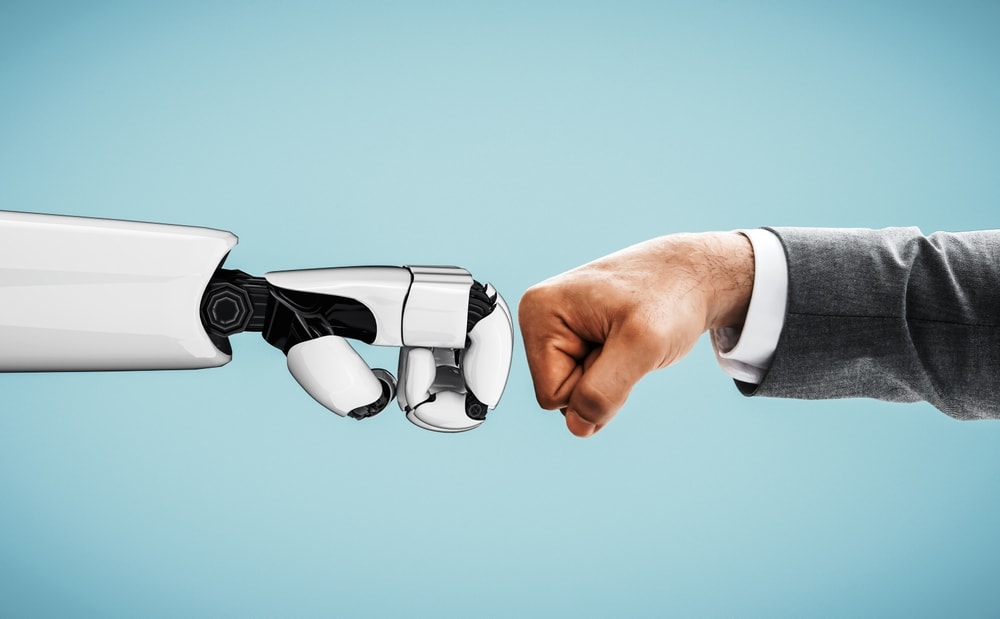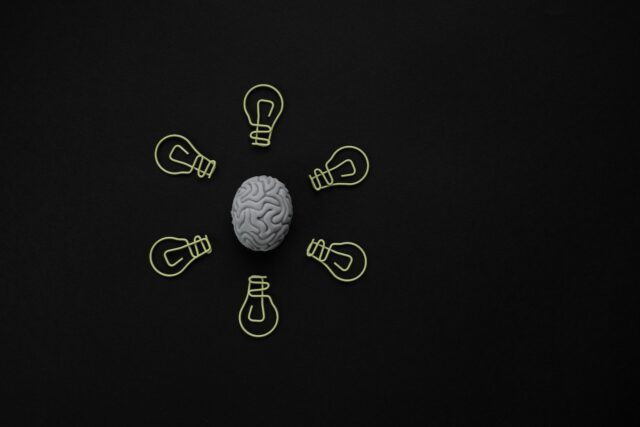Conflict isn’t new, but the tools we use to approach it are fast evolving. These days, artificial intelligence is showing up everywhere, from courtroom predictions to customer support scripts. Naturally, artificial intelligence is a powerful tool making its way into the conflict resolution process.
However, we’re not handing the wheel to machines. What we’re seeing instead is a shift where AI technology isn’t taking over but quietly reshaping how we listen, interpret, and respond in high-stakes situations.
When it comes to workplace conflict resolution, AI systems aren’t about automating tough conversations. They’re about expanding human oversight to help resolve conflicts.
Understanding AI Conflict Resolution
AI conflict resolution is not some robot sitting across the table in a negotiation. It’s more like a quiet assistant that helps spot communication patterns, translates dialects on the fly, or suggests possible next steps based on historical data.
That said, the line between helpful and overconfident gets blurry. Today’s AI systems, especially the ones built on generative AI, can sound alarmingly fluent.
Still, fluency doesn’t mean accuracy. Artificial intelligence systems like ChatGPT are known to “hallucinate,” making up facts with absolute certainty. One moment, it’s drafting an agreement; the next, it’s inventing a law that doesn’t exist.
The consensus is clear: Use AI cautiously. It can analyze sentiment or suggest conflict resolution strategies, sure. But it can’t read a room or pick up on the emotional weight behind someone’s pause. Those are still very human skills that human mediators rely on every day.
Industry Trends
The growth of AI in conflict work is already reshaping tools and peacebuilding expectations. Some of what’s out there might surprise you:
- Online Dispute Resolution (ODR): eBay has quietly resolved millions of disputes without a single phone call. Their system nudges buyers and sellers toward resolution through structured prompts. No human is needed unless things escalate. Newer platforms are layering in natural language processing to adapt responses based on tone or urgency.
- LLMs for Scenario Planning: At the UN Innovation Cell, researchers are using AI models to map out potential outcomes in peace negotiations. The Belfer Center is doing something similar, modeling conflict scenarios to support diplomatic strategy.
- Virtual Agents and Chatbots: Some startups are building bots that talk to users through de-escalation exercises. They aren’t perfect, but they do offer a kind of neutral space when disagreements feel too raw for live mediation.
- Translation and Dialect Tools: If two parties can’t understand each other, trust breaks down before it starts. Companies like Meta and Google are now enabling real-time translation of local dialects to help bridge gaps in cross-border or multi-lingual mediation sessions.
- Public Sentiment Tracking: AI is also scraping radio, social media, and local news to detect tension before it erupts. In parts of Africa, these systems flagged hate speech before political violence broke out, giving peacebuilders time to act.
How We’re Integrating AI at Pollack Peacebuilding
For us, AI is about giving mediators better conflict resolution tools. At Pollack Peacebuilding, we build everything we do around human judgment. We use AI technology to support that work, without ever losing what makes it personal.
Conflict Assessment and Analysis
It starts with people. Every engagement begins with private interviews. Through active listening, we ask questions and try to understand what’s going on beneath the surface. These conversations help us get to the root of the issue and enhance communication between all parties involved.
From there, we create a plan. That plan evolves over time. Through regular coaching and follow-up, we keep checking in. What’s working? What’s not? Conflict isn’t static, so neither is our approach.
AI-Driven Conflict Management Strategies
That said, we’re not ignoring the tech. We use secure digital platforms to connect with remote teams, and we’re testing ways to use data analysis to detect patterns in communication breakdowns.
Sometimes it’s a missed expectation. Other times, it’s a slow erosion of trust. Either way, we use predictive analytics to help highlight where things are going off track.
We’ve also used remote conflict resolution tools to support clients who work across time zones. In those situations, fast responses matter, and AI’s role becomes clear. With advanced AI capabilities, these systems help protect valuable time and keep conversations moving, especially when the risk of workplace conflict is high.
Training Programs for AI Conflict Resolution
We also teach people how to use these tools wisely. Our conflict resolution training and conflict resolution workshops aren’t just about managing emotions or leading tough meetings (though we cover that, too). They’re about building teams that can navigate conflict with or without AI in the mix.
We’re starting to include more discussions on how to work with AI responsibly. What happens when your manager sends an AI-generated performance review? Or when someone uses an AI bot to “mediate” a disagreement? People need the skills and the awareness to respond with confidence.

AI’s Role in Modern Peacebuilding
We’re past the point of wondering if AI’s role belongs in peacebuilding. The real question is how we use it to support people in ways that genuinely improve conflict resolution, not replace them.
Forecasting and Early Detection
When tension simmers beneath the surface, it’s often hard to spot until it’s not. AI has started to bridge that gap. By combing through real-time data like social media posts, radio segments, and public sentiment, AI systems are helping researchers and peacebuilders spot danger zones before violence erupts, one of the biggest benefits of integrating technology into early warning systems.
In Uganda, for instance, automated tools detected spikes in hate speech weeks before civil unrest broke out. That kind of early signal gives communities a chance to act, not just react. The UN is also piloting similar strategies, which are less about flashy tech and more about conflict resolution strategies that catch warning signs early and quietly.
Scenario Simulation and Decision Support
Sometimes, mediators have to think two or three moves ahead when managing conflict. That’s where AI tools can make a difference. These systems can simulate conflict and flag potential outcomes that might not be obvious when tensions are high and clarity is in short supply.
For human mediators, it’s not a replacement for human experience, but it can help double-check assumptions before they’re spoken out loud.
Bias Auditing and Blind Spot Detection
Even skilled mediators bring their own personal biases. Some are cultural, while others come from past experience or just how we frame problems. Artificial intelligence can help surface those patterns, especially when going through conflict resolution in the workplace, where miscommunication and underlying tension often go unnoticed.
Let’s say two coworkers are locked in a workplace conflict. They might each think the other is being unreasonable. An AI-driven review of their emails or Slack threads could show mismatched expectations, repeated misunderstandings, or shifts in tone that neither one recognized. When framed well, this kind of analysis becomes one of the most valuable conflict resolution tools in the process.
Enhancing Accessibility and Inclusion
Mediation breaks down when not everyone can speak. When language barriers arise, whether through dialect, translation gaps, or lack of access, entire perspectives risk being excluded.
With natural language processing, translation tools from Meta and Google now make it easier for more people to engage, no matter the language. And that’s just the start. AI’s potential to interpret speech patterns opens new doors for inclusion in even the most complex disputes.
Tools like digital twins and extended reality (XR) are helping parties step into each other’s world visually, spatially, and emotionally. When people can see what others are protecting or fighting for, empathy comes quicker.
Inclusion is a necessity when conflict cuts across identity, geography, or history.
Data-Driven Support for Mediators
Paperwork steals time. Sorting documents requires human resources that could be better spent engaging with people directly. AI helps here, too.
Unlike traditional methods, today’s platforms can draft summaries, flag issues, and even propose questions that support deeper dialogue. At Pollack Peacebuilding, we use these conflict resolution tools carefully to clear the path, not drive it.
They’re there to prep us but not replace us. Real positive change still comes from people sitting down and choosing to resolve conflicts, one conversation at a time.
Challenges and Opportunities
AI offers promise, but it also comes with baggage. The same system that speeds up conflict mediation might also miss emotional cues or reflect data bias. This isn’t a black-and-white issue. It’s a mix of risks and possibilities.
Challenges
- Hallucinations are real. Some language models have confidently generated false legal information, which is definitely not ideal in the middle of a mediation process.
- Bias sneaks in. AI’s role in conflict work depends entirely on the data it learns from. If that data is flawed, so are the results.
- Emotion gets lost. AI doesn’t feel. It can’t spot sarcasm, silence, or that moment someone checks out of a conversation.
- It’s expensive. Cutting-edge AI technology isn’t cheap. Many communities can’t access it.
- The digital divide is real. Who gets these tools and who doesn’t matter more than we admit.
- Overtrust is dangerous. Relying too heavily on AI, without human oversight, raises serious ethical concerns. AI solutionism, which refers to trusting machines to fix what requires human care, can easily backfire. What works in a controlled setting often falls apart when applied to the messy realities of human relationships.
Opportunities
- Speed where it matters. AI’s role in streamlining research and document prep saves hours, freeing up time for work that depends on human performance, like facilitating dialogue and making nuanced decisions.
- Early warning saves lives. Peacebuilders now spot unrest faster, before it escalates.
- More voices, not fewer. With better translation, marginalized groups can join the table.
- Hybrid workflows work. Chatbots handle intake; mediators handle the depth.
- VR redefines engagement. In Colombia, virtual reality helped open stalled negotiations by showing what was at stake visually and emotionally.
A Human-Centered Future for AI Conflict Resolution
We’re excited about the future, but we’re not naïve. At Pollack Peacebuilding, we believe the conflict resolution process must stay grounded in people. We use tech where it adds clarity or access. In multiple industries, from law to finance to real estate, AI is transforming how business operate, and that means we need to meet organizations where they’re at.
But the heart of the peace process, which is communication, empathy, and trust, still lives in the human space. It’s rooted in the complexity of the human condition, where real connection is what ultimately improves conflict resolution.
Our conflict resolution services blend context, culture, and complexity. We use tools to extend our reach, not replace our judgment. When it comes to supporting mediators, navigating disagreements, or building a productive work environment, AI can help, but human decision-making leads.
Are you curious about how we incorporate artificial intelligence into conflict resolution services? Contact us to talk about your needs, goals, or vision for the future.



